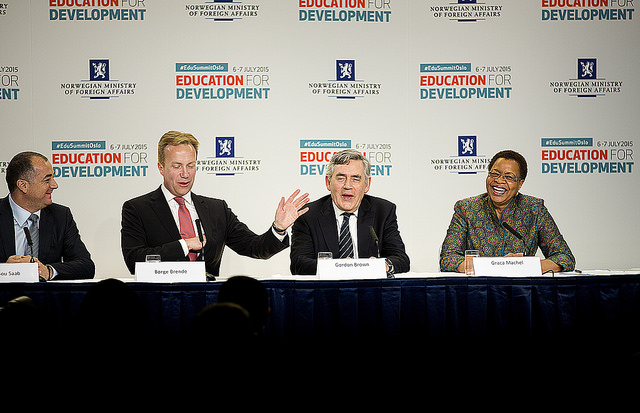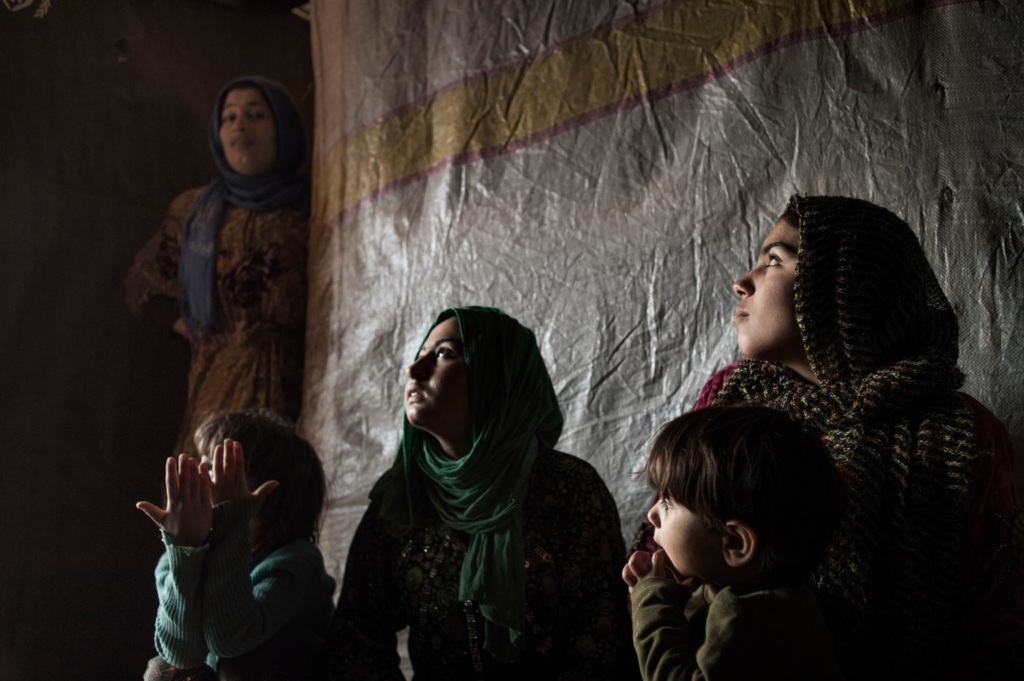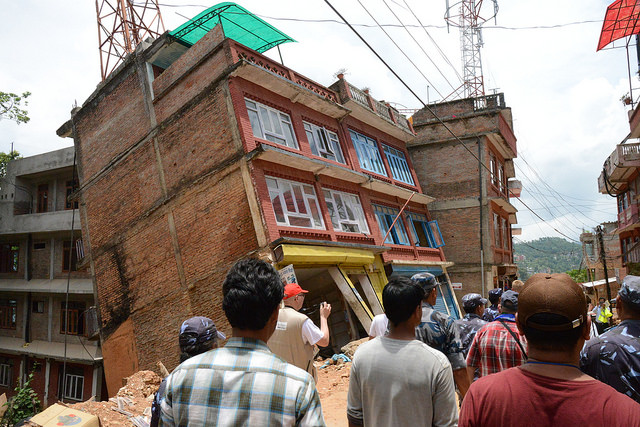World Leaders to Hike Education Funding in Time for New School Year

Photo Courtesy of Norway MFA/Espen Røst.
HRH Crown Prince Haakon, UN Secretary-General Ban Ki-moon, Prime Minister Erna Solberg, Foreign Minister Børge Brende, and Malala Yousafzai at Oslo’s opening ceremony.
In just two months, world leaders will gather for the annual United Nations General Assembly to adopt the post-2015 development agenda. The Sustainable Development Goals (SDGs) were drafted through inclusive collaboration and the next fifteen years will require the participation of all factions of society. The success of the SDG depends on it. But there still remains 59 million children around the globe who do not even have access to primary education. For them, the need for schooling is urgent.
This week, leaders gathered for the Oslo Summit on Education for Development to ensure that these children have a seat in the classroom. The second-to-last high-level education summit before September’s UN General Assembly was led by the Norwegian Ministry of Foreign Affairs and included government participants, UN agencies, the private sector, and civil society. Within the span of 48 hours, Angry Birds creator Peter Vesterbacka moderated a session in which CEOs talked of the explosion of mobile access and the “global classroom”; a new declaration was decided on for education; and world leaders were called on to invest $39 billion annually to ensure that every child has access to 12 years of free, quality primary and secondary education. Three major outcomes from the Oslo Summit on Education for Development include:
1. Education in emergencies will be funded via a financing platform.
One month ago, GBC-Education released a survey detailing why the private sector supports a financing mechanism for education in emergencies. After the Incheon World Education Forum back in May, world leaders decided that the global community had to establish a solution to address education in emergencies and conflict. Currently, the gap to provide an education for the 37 million primary and secondary age children currently out of school in crisis situations (think: conflicts in Syria and South Sudan, natural disasters like the Nepal earthquake, and epidemics like West Africa’s Ebola outbreak) is estimated at $4.8 billion. Compared to other sectors, education is doubly disadvantaged: The UN appeal is modest and the funding they receive is sparse. In 2014, only 1 percent (or $186 million) of overall humanitarian aid was spent on education. Public, governmental spending alone cannot reverse the downward trend in international support for education. Public-private partnerships, however, can help. In fact, investing in education would align with business’ interests — as well as that of their domestic economies. Already, European Commissioner for Humanitarian Aid and Crisis Management Christos Stylianides committed to increasing their budget for education in emergencies from 1 percent to 4 percent.
2. A Global Commission on Financing Education will drive the solutions on financing education forward.
One day after the most recent figures showed that the number of out-of-school children had risen since 2010 while aid to education continued to fall, the establishment of a high-level International Commission on the Financing of Global Education Opportunities was announced. The Prime Minister of Norway, the President of Malawi, the President of Indonesia, the President of Chile and the Director-General of UNESCO, called for the commission’s creation. The Global Commission will be chaired by UN Special Envoy for Global Education, Gordon Brown, and will present findings to the UN Secretary-General at the September 2016 UN General Assembly. The Commission’s goal is, in effect, to inject a sustained release of the “big picture” argument bundling universal global education with economic growth.
Photo Courtesy of Astrid Sehl.
Norway’s Minister of Foreign Affairs Børge Brende visited Nepal in late June.
3. Norway committed to doubling aid to education.
During the summit, Norwegian Foreign Minister Børge Brende announced that Norway would double their international development assistance for global education, leading the way for global leaders to increase their aid as well.
4. More funding in the “September Surge” for the new school year for Syrian refugee children in Lebanon.
In the run up to the summit the U.K. announced an additional £100 million in aid to boost their programs providing emergency aid for countries facing migration crises, including an extra £20 million for education in Lebanon in time for the upcoming school year. Norwegian Foreign Minister Børge Brende also announced that Norway would provide an additional $10 million to Syrian refugee children in Lebanon. The U.S. said they would pitch in too and other donor parties are expected to follow suit.

Photo Courtesy of ©UNICEF/Romenzi.


